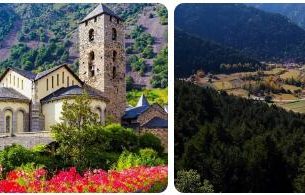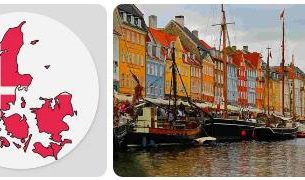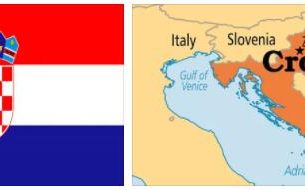In the aftermath of the First World War, the development of a national school contributed to a profound renewal of Portuguese musical life, in the sense of both a revival of the folkloric heritage and an opening towards the main European musical currents of the period, in particularly French Impressionism and Schönberg’s atonalism. Among the composers who stood out most in the musical panorama of the first decades of the 20th century, we remember in particular L. de Freitas Branco (1890-1955) and R. Coelho (b. 1891).
De Freitas Branco played a leading role starting from the mid-10s: already in the first compositions (thus the symphonic poem Os paraísos artificiais, 1910) is affected by the influence of impressionism, turning at the same time to the atonalism of A. Schoenberg. Author of piano, chamber and symphonic music, in the mid-twenties he developed a neoclassical style, which is expressed for example. in the Sonata for violin and piano n. 2 (1928) and in the 4 Symphonies, written between 1924 and 1952. Coelho, founder of the Acçao nacional de ópera in 1934, is the author of a vast musical production, in particular symphonic and operatic, of a nationalistic style, which was initially affected by Schönberg’s atonalism: the Camoneana Symphony n. 1 (1912), the Rapsodias portuguesas n. 1 (1934) and n. 2 (1942) and the Suites portuguesas nos. 1-4, written between 1925 and 1956. In those same years a third composer of the eldest generation, C. Carneyro (1895-1963) moved between folklore and twelve-tone music.
Starting in the 1930s, a new generation of composers trained in the nationalistic school emerged: among others we remember AJ Fernandes (b.1906), a pupil of de Freitas Branco, in the mid-1920s, at the Lisbon Conservatory, and the youngest F. Corrêa de Oliveira (b. 1921), a pupil of Carneyro at the Conservatory of Porto. At the end of the 1940s, J. Braga Santos (b.1924), author of 4 Symphonies, in which he is influenced by the influence of the master, referred to the neoclassical phase of the work of de Freitas Branco: a more personal style found in the works of the following period, such as in Esboços sinfonicos (1962) and Sinfonietta for strings (1963).
A particularly important figure in the first half of the century is that of FL Graça (b.1906), author of a vast production of folkloric imprint, ranging from piano music (Piano Sonata n.2, 1939) and chamber music (Quartet for piano, 1939), to the orchestral one (Piano Concerto n. 1, 1940) and operatic (La Fièvre du temps, ballet, 1938), in which the author makes use of contemporary compositional techniques. For Portugal 2003, please check computerannals.com.
A notable influence on the composers who most contributed to the diffusion of the avant-garde in Portugal in the sixties had J. Croner de Vasconcelos (1910-1974), for a long time professor of composition at the National Conservatory of Lisbon. Among his pupils we remember M. de L. Martins (b. 1926), who in the early 1960s came into contact with the German (K. Stockhausen) and Italian (L. Nono and B. Maderna) avant-garde; A. Santiago (b. 1932), who specialized with G. Petrassi at the Accademia di Santa Cecilia in Rome in the early 1960s; LF Pires (b. 1934), who devoted himself in particular to electronic music (among his compositions of the seventies we remember Homo Sapiens, 1972; Litania, 1972; Reportagem, 1974; Dialogos for 8 instruments and magnetic tape, 1975), and J. Peixinho (b.1940).
Peixinho is perhaps the most significant author of the Portuguese avant-garde: he founded (1970) the Grupo de Musica contemporânea de Lisboa, after having first specialized at the Accademia di Santa Cecilia in Rome with B. Porena and G. Petrassi (1960-61), later at the Basel Academy of Music with Portugal Boulez, K. Stockhausen and GM König (1962-63), and later in Venice with L. Nono; he composed, among other things, Successoes simétricas I, for piano (1961), Successoes simétricas II, for orchestra (1971), Successoes simétricas III, for chamber orchestra (1974), Con-sequência (1974), in collaboration with il Grupo de Musica contemporânea, … e isto é so o início, hein? , for instrumental ensemble (1975).
Composer of great prominence in current Portuguese music, and, alongside the Spanish T. Marco, in the Iberian one, is E. Nunes (b.1941), who was first a pupil of H. Pousseur at the summer courses in Darmstadt (1963- 65), then by K. Stockhausen at the Rheinische Musikhochschule in Cologne (1965-67).
A first cycle of compositions by Nunes includes the most famous work, Ruf, for orchestra and magnetic tape (1975-77; new version, 1982), which enjoyed great success at the Royan Festival (1977) and for which the author received the Psacaropulo prize from Turin music critics (1987). Also worthy of mention are, together with The blending season for flute, viola, clarinet, electric organ and amplitude modulators (1973), Fermata for orchestra and magnetic tape (1973), Voyage du corps for 28 voices, amplitude modulators and magnetic tape (1973-74), Impromptu pour un voyage II, for flute, viola and harp (1974-75), 73. Oeldorf. 75 n. 1 for 3 stereo magnetic tapes and 2 electric organs (1975), n. 2 for 6 vocal groups and 3 stereo magnetic tapes (1976), and Minnesang for 12 voices (1975-76). A second cycle, entitled The Creation, includes, among other things, Nachtmusik I for choir and 4 instruments (1977-78) and II for orchestra (1981), Einspielung I for violin (1979), II for cello (1980) and III for viola (1981), Tif’ereth for 6 instruments and 6 orchestral groups with two conductors (1978-85) and Wandlungen (5 Passacaglien) for 25 instruments and electronic music (1986).



